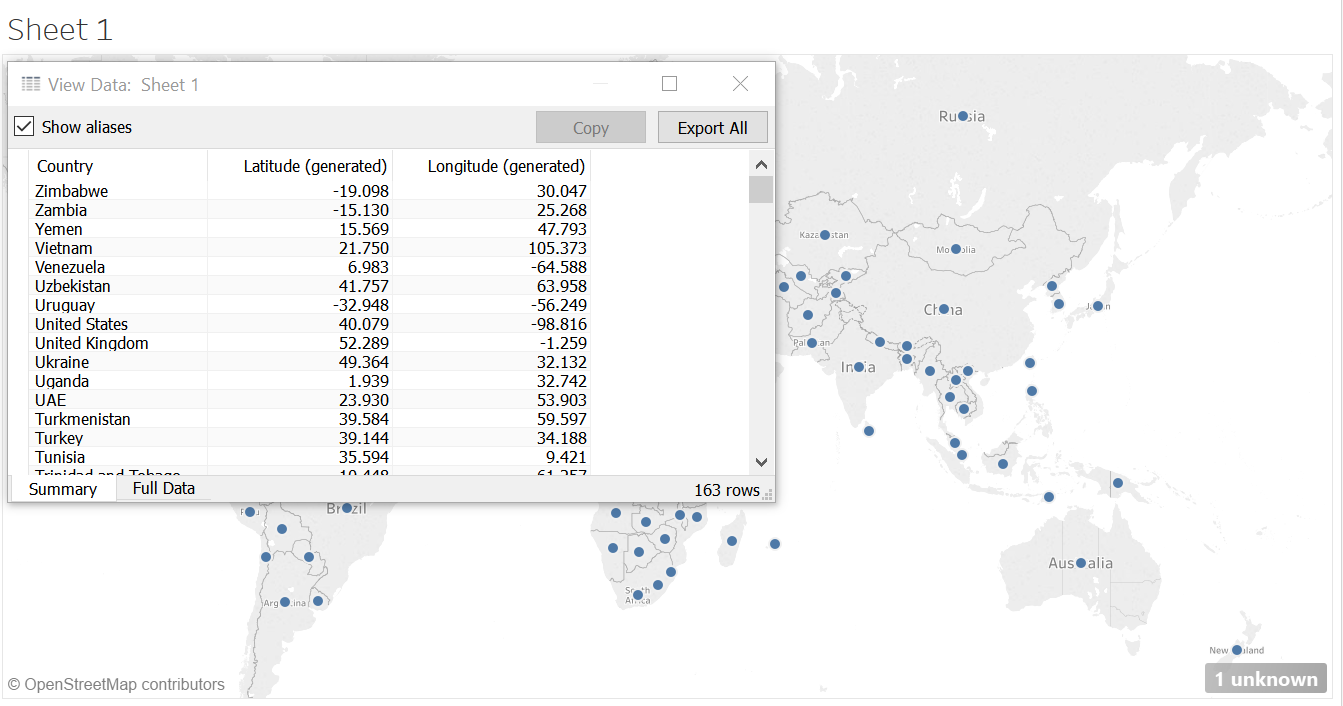Add a Line Equation to Excel: Easy Guide
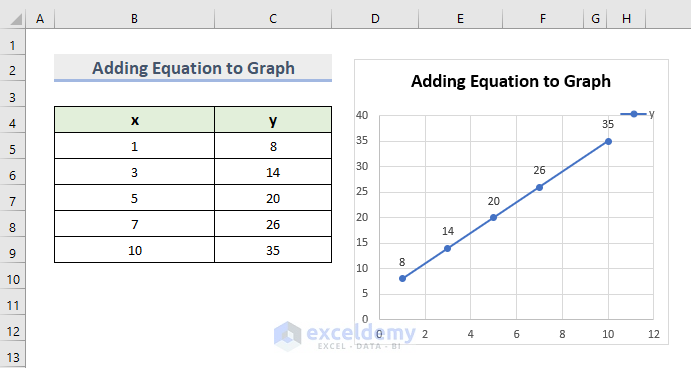
Adding a line equation to an Excel chart can greatly enhance its visual representation and provide valuable insights into the data being analyzed. This guide will walk you through the process of adding a line equation to your Excel charts, making your data presentations more informative and professional.
Step 1: Prepare Your Data and Create a Chart
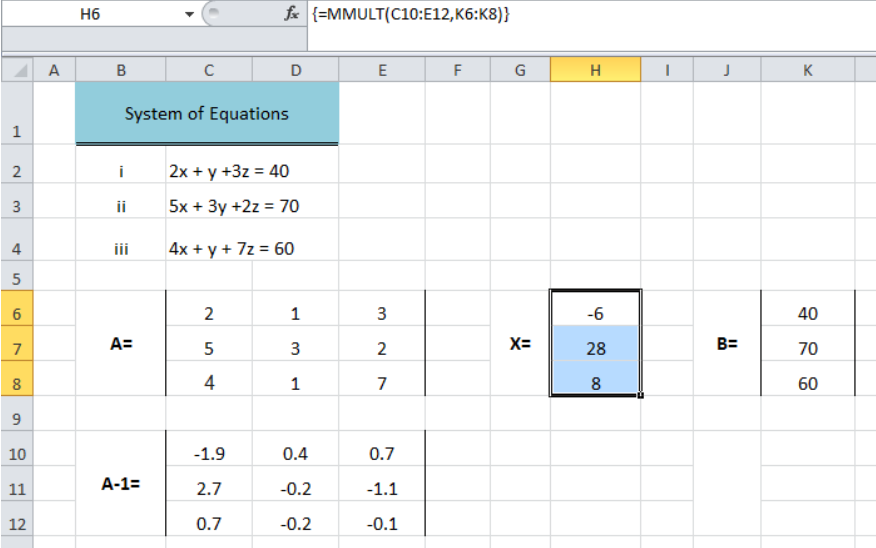
Before we begin, ensure you have your data ready in an Excel worksheet. Your data should consist of at least two columns: one for the X-axis values and another for the corresponding Y-axis values. For instance, let’s say we have data on temperature variations throughout the year, with the months representing the X-axis and the average temperatures representing the Y-axis.
With your data prepared, follow these steps to create a chart:
- Select the data range, including both the X and Y values.
- Navigate to the Insert tab on the Excel ribbon.
- In the Charts group, select the type of chart you want to use. For our temperature data, a Line Chart would be suitable.
- Excel will insert the chart into your worksheet. If you want to modify its appearance, you can use the Chart Design and Format tabs to customize it.
Step 2: Enable the Chart Title and Add a Formula
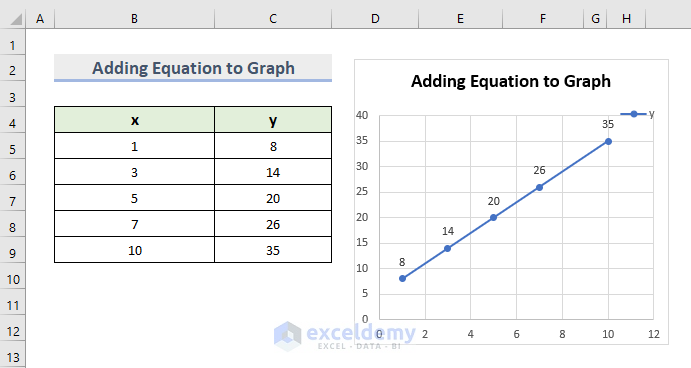
To display the line equation on your chart, we need to enable the chart title and add a formula that represents the line. Here’s how to do it:
- Right-click on the chart and select Add Chart Element from the context menu.
- In the dropdown menu, choose Chart Title and select Above Chart as the location.
- A chart title placeholder will appear. Click on it, and a text box will open. Type y = mx + b to represent the line equation, where y is the Y-axis value, m is the slope, x is the X-axis value, and b is the y-intercept.
- To display the actual equation based on your data, you'll need to add a formula. Right-click on the chart again and select Select Data from the context menu.
- In the Select Data Source window, click on the Add button.
- In the Edit Series dialog box, enter a name for your equation series (e.g., Line Equation) in the Series name field. This will be the label displayed in the chart legend.
- In the Series values field, enter the formula to calculate the line equation. The formula will depend on your data and the relationship between the X and Y values. For our temperature data, the formula could be
=SLOPE(Y_values, X_values) * X_values + INTERCEPT(Y_values, X_values). ReplaceY_valuesandX_valueswith the actual cell ranges for your data. - Click OK to close the Edit Series dialog box and then click OK again to close the Select Data Source window.
Step 3: Customize and Format the Line Equation
Once you’ve added the line equation to your chart, you can customize its appearance to match your preferences and the style of your chart:
- Right-click on the equation text and select Format Axis Title from the context menu.
- In the Format Axis Title pane that appears on the right, you can adjust various properties, such as the font, size, color, and alignment of the equation text.
- Additionally, you can change the position of the equation by selecting the Layout & Properties tab in the Format Axis Title pane and adjusting the options under Position.
- If you want to add further visual elements, you can also customize the line style, marker type, and other properties by right-clicking on the equation line and selecting Format Data Series.
Step 4: Update the Line Equation with New Data
Excel charts and their associated equations are dynamic, meaning they update automatically when you modify the underlying data. If you add new data points or change the existing values, the line equation will adjust accordingly.
To ensure that your chart and equation remain accurate and up-to-date, follow these steps:
- Select the chart and ensure that the Formula Bar at the top of the Excel window is visible. If it's not, click on the Formula Bar button on the right side of the ribbon.
- In the Formula Bar, you'll see the formula for the line equation. Ensure that the cell references within the formula match the new data range.
- If you've added new data points or modified the existing data, adjust the cell references in the formula accordingly. Excel will automatically recalculate the equation based on the updated data.
Advanced Tips and Considerations
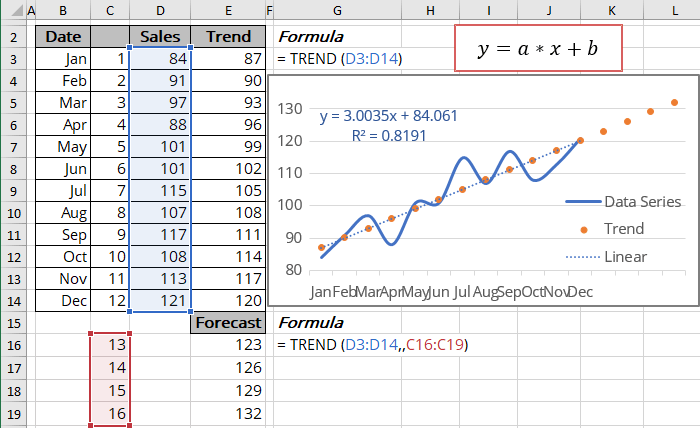
When working with line equations in Excel charts, there are a few additional considerations and tips to keep in mind:
- Data Consistency: Ensure that your data is consistent and follows a logical pattern. If there are outliers or missing values, they can affect the accuracy of the line equation and the chart's interpretation.
- Error Bars: If your data has some variability or uncertainty, you can add error bars to the chart to represent the range of values. This provides a more comprehensive visual representation of the data.
- Trendline Options: Excel offers various trendline options, such as linear, exponential, logarithmic, and polynomial. Depending on the nature of your data, you can choose the most appropriate trendline type to represent the relationship between the X and Y values.
- Multiple Equations: If you have multiple data series in your chart, you can add equations for each series by following the steps outlined earlier. This allows for a comprehensive analysis of multiple datasets.
Conclusion
Adding a line equation to your Excel charts is a powerful way to enhance data visualization and provide a deeper understanding of the relationships between variables. By following this guide, you can create informative and visually appealing charts that showcase the equations underlying your data. Remember to customize and format your charts to align with your specific needs and preferences, ensuring a professional and accurate representation of your data analysis.
FAQ
How do I change the equation’s font and color in Excel charts?
+To customize the font and color of the equation in an Excel chart, right-click on the equation text and select Format Axis Title. In the Format Axis Title pane, you can adjust the font, size, color, and other properties to match your desired style.
Can I add multiple equations to a single Excel chart?
+Yes, you can add multiple equations to a single Excel chart. Simply follow the steps outlined earlier to add an equation for each data series. This allows you to analyze and visualize multiple datasets and their respective equations in a single chart.
How do I ensure my equation is accurate when adding new data points in Excel charts?
+To ensure accuracy when adding new data points to your Excel chart, make sure the cell references in the equation formula match the updated data range. Excel will automatically recalculate the equation based on the new data. Regularly review and adjust the formula as needed to maintain accuracy.


